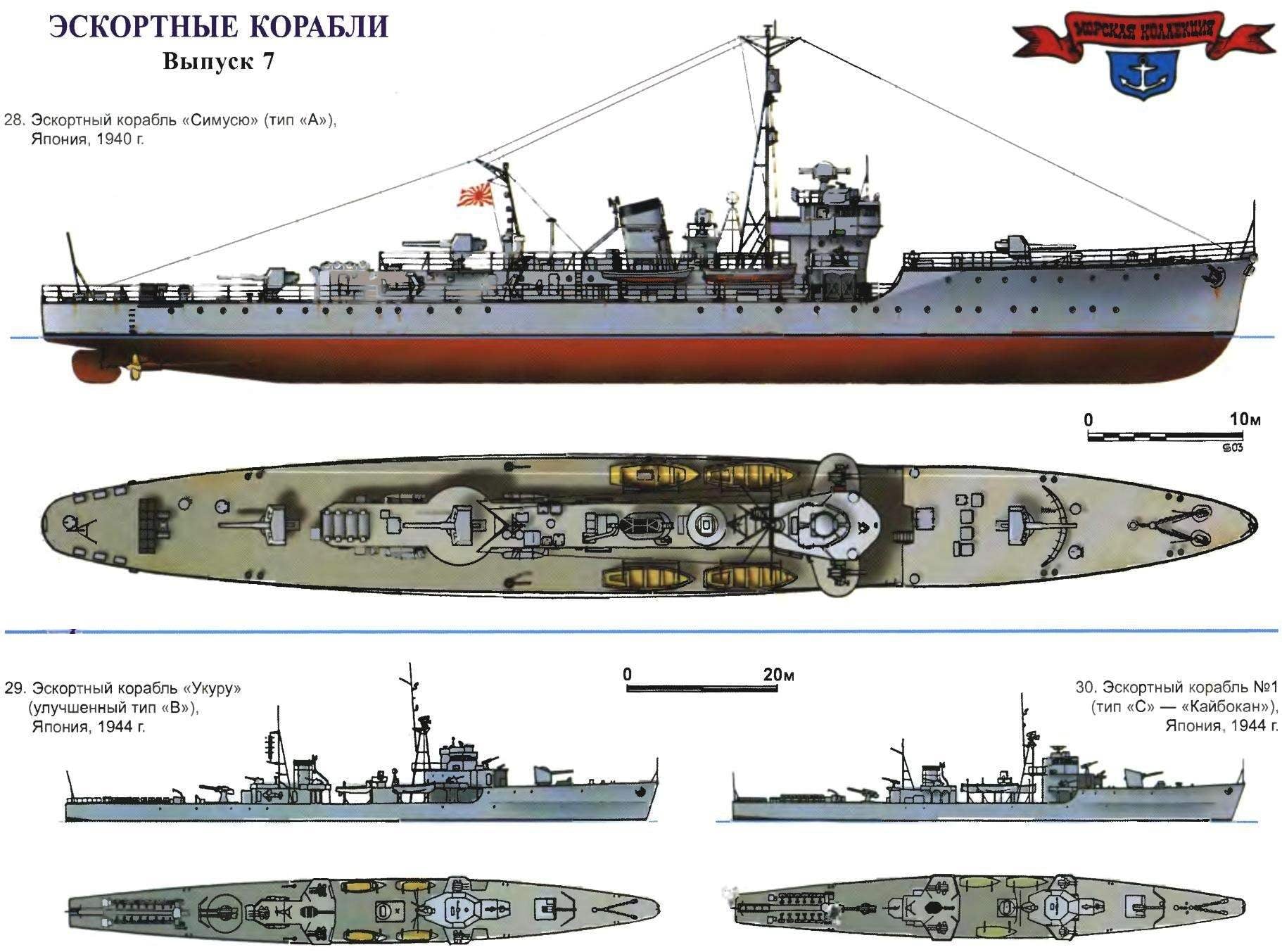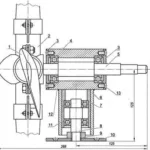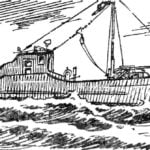 It would seem that Imperial Japan was preparing for an inevitable clash with their enemies very carefully. Why are only plans to capture the Philippines, Singapore, various Pacific Islands, is gorgeously designed and, despite their riskiness, successfully implemented. However, Navy staff and command of the combined fleet knew all this was good only for “lightning” war. The outcome of prolonged confrontation with the United States is not in doubt — the Japanese economy could not compete with the us, that sooner or later would inevitably have led the descendants of the samurai to a heavy defeat.
It would seem that Imperial Japan was preparing for an inevitable clash with their enemies very carefully. Why are only plans to capture the Philippines, Singapore, various Pacific Islands, is gorgeously designed and, despite their riskiness, successfully implemented. However, Navy staff and command of the combined fleet knew all this was good only for “lightning” war. The outcome of prolonged confrontation with the United States is not in doubt — the Japanese economy could not compete with the us, that sooner or later would inevitably have led the descendants of the samurai to a heavy defeat.
Since the resources of Japan are not allowed to build in the right quantities of combat ships of all types and purposes, priority was given to the main classes — aircraft carriers, heavy cruisers, destroyers, submarines. The admirals tried not to think about what you will have to escort the convoys bringing soldiers together with weapons and supplies in the occupied countries and exporting from there a much-needed strategic goods. Therefore, after the euphoria of the first victories came the harsh everyday life: American submarines increasingly felt themselves complete masters on the seas surrounding the island Empire. And then for the Japanese, especially acutely the question arose about the need to have escort ships, and as much as possible.
Before the war all the remaining building of the old destroyers have been restructuring. Original of them have tried to create fast transports, minesweepers and mine layers, however, based on combat experience mine weapons on the ships began to change in ASW.
The most modern of the past such alterations have become the destroyers of the type “Mutsuki”, which entered in operation in 1926-1927. Took a couple 120-millimetrovogo, but left a formidable 609-mm torpedo tubes, providing them with light shields. Of antisubmarine weapons, four mortars, although the supply of depth charges was clearly insufficient. However, turned out quite decent escort destroyers, although in the beginning of the war “Mutsuki” and his associates were used primarily as fast transports for the delivery of advanced landings.
Similar modernization was expecting and older vehicles types “Kamikaze” and “Akikaze”, received the same armament (torpedo tubes only they had a caliber of 533 mm). Even more or less suitable to service the unit even more “ancient” and failure types (“Wakatake”, “AOI” and “Zug”) has turned into a kind of escort destroyers. However, the small displacement and poor stability were not allowed to use them in the open ocean. Mostly they served off the coast of China and Indochina, where he proved very useful.
The main drawback of the improvised “escortscom” was a small supply of depth charges (total of 36 pieces), which they are much inferior to the much slower and weaker in artillery against British and American ships of a special construction. When you consider the fact that the “old men” it was impossible to find a place for modern sonar station (which, by the way, the Japanese have not yet been), their anti-submarine capabilities were still too limited to fight numerous and very active submarines of the US Navy.
More successful were also “former”, not the destroyers, and the destroyers types of “Atari” and “Chidori”. They stayed with the same artillery weapons (two 120-mm guns and ten 25-mm guns), and destroyers upgraded, but the stock depth charges on them have been increased by a quarter, along with relatively modern equipment. All this allowed them to be the best Japanese ASW ships of the Second world war.
12 however, neither “best” nor the three dozen destroyers-“old people” obviously could not provide thousands of kilometres of communication of the Eastern Empire, not to mention the fact that the years of life of the converted ships were numbered. Therefore, in parallel with the construction of the “big” battle fleet Japanese engineers tried to create and projects that escort ships of a special construction.

In Europe already the war raged, when in the summer of 1940 came into operation the first of them, “Samusu”. Traditionally focused on artillery, which was all the same 120-graph paper, partly taken from old destroyers. In General, designers have tried to create a universal unit, arming it and countermeasure equipment and depth charges. However, the latter was again very small — only 12 pieces, and any sonar equipment was missing.
However, the first four Japanese astartica of spacestrike, designated “type A” was the prototype for all subsequent, the characteristics of which are improved from project to project. So, modified type “A” (14 units) has carried 36 depth charges and simplest hydrophone. Of course, he came too late: in 1943 the war in the Pacific was in full swing and has been full and final turning point in favor of the United States. Hundreds of escort ships of the Americans weakening the country samurai could oppose only a very few of its series. To designate them Japanese enough is not something that all of the alphabet — they could not even move his third letter. Type “b” and the superior “In” structurally already quite met the requirements, device to anti-submarine vessels… in the beginning of the war. They continued to bear all the same extremely powerful artillery armament, but the supply of depth charges increased to 120 pieces. The housing design is simplified to the limit when you can deploy mass-produce them. However, it was already 1944, and the decline of the patrol was always higher than their entry into service. They sank from torpedoes, submarines, and bombs or missiles aviation. One 76-millimetrovie and four 25-mm guns was clearly lacking, even for self-defense against aircraft, and, as in all warships, the number of machines on the surviving units has steadily increased first to 14, then to 18 barrels.
But even such a lowly boats began to land of the rising sun inadmissible luxury. Not enough, in particular diesel engines, which was the basis of the power plant guard vessels of all series. In 1944 he had to withdraw from the contract for 30 units superior type “In” in favor of the penultimate variant — type “C”. The already simple design came to the brink of primitivism. Purely a welded hull had a distinctive angular shape without collapse and bend. Together with the displacement decreased and the number of diesel engines that provide now a minimal of 16 knots.
The last patrol of Japan has not received even the names, having odd numbers starting with one. Indeed, if the program had done with the names could cause problems, since the total order was for 124 units, and the plan was to build an additional 168 (it officially did not have time to approve).
The latter became type “D” or “Kai-Bokan-II” (translated as “escort ship-II”), which differs from the type “C”, in essence, only the type of machine installation. Scarce small diesel engines replaced the turbines, providing for a knot greater speed. However, on third down is even more important in the vastness of the Great ocean — cruising range. The ships of the “D” is simply not physically able to carry out TRANS-oceanic crossings, although successfully covered convoys in the China — recent routes, saved Japan from starvation.
The “Kaibokan-II”, ships which received the missing even numbers seem to be so ambitious as “odd”. Even the Japanese archives don’t give complete information on the number ordered, planted and included in the operation of ships. However, hundreds of recent escortyou went to the bottom or fell into the hands of the allies, in varying degrees of readiness. After the war, they shared equally the winners — the US, Britain and the Soviet Union, who got eight D and three to six. Another 11 units passed to the Chinese, who promptly introduced their operational and actively used in the civil war.
The lack of escort ships forced the Japanese to use in this role and captured the ships, even the ancient destroyers of the allies captured in the first weeks of the war. This fate, in particular, suffered a waterlogged English “Trashion” who failed to leave Hong Kong. It retained the original arms, but left only a part of the boiler that reduces the speed of the former destroyers (by the way, one of the most fast during the First world war) to “escort” 25 knots. He joined the Japanese Navy in December 1942, receiving room 101. This transformation of the former “Englishman” is not over. In 1944 it was converted into a completely exotic for Imperial Navy ship radar picket. Most interesting is that the veteran survived the war and again went to the British, but due to the extreme dilapidation was immediately scrapped all in the same Hong Kong.

31. Escort ship (ex trawler) W-1, Japan, 1944
Built by “Harim”. The standard displacement of 615 tons, full 720 T. maximum Length 76,26 m, width of 8.03 metres, draught of 2.29 m. Capacity twin-shaft steam triple expansion installation 4000 HP, speed 20 knots. Service after the conversion: one 120-mm gun, five 25-mm anti-aircraft guns, 36 depth charges. Just 1923-1924 built four units (W-1 — W-4), all but sunk in 1942 W-2, converted to escort ships. W-1 and W-3 died in 1945, W-4 scrapped after the war.

32. Escort ship (ex-destroyer) No. 101, Japan, 1944
Built by “Hawthorne Leslie” (England). The standard displacement 905 tons full 1240 T. maximum Length 84,18 m, beam of 8.18 m, draft 3.0 m. Capacity twin-shaft steam turbine of 10,000 HP, speed 25 knots. Armament: three 102-mm guns, one machine gun, four 609-mm torpedo tubes, 18 depth charges. Captured by the Japanese in Hong Kong in December 1941, came into operation in July 1942 and In 1944 converted into a special vehicle radar patrol scrapped in 1946
The next room, 102, went to the American “gladkotrubnye” “Stuart”, taken in dry dock in Surabaya. It was thoroughly rebuilt (in particular, combining the two nasal tubes into one and removing almost all the weapons). In 1943 he was commissioned, with two 76-mm anti-aircraft guns and several machine guns. It is noteworthy that after repair an old ship could reach the speed of 26 knots — quite a good result. Subsequently, he even upgraded by adding sixteen 25-mm machine guns and 72 depth charges. “Stewart” also survived in the Pacific slaughter, and even returned home, only to be sunk as a target near San Diego.
Another destroyer allies, the Dutch “Bankert”, as captured in the workshop in Surabaya, got the room 106. Eroded and flooded in the dock, the ship lifted and fully rearmed, by setting these two 76-mm anti-aircraft guns and twelve 25-mm guns, as well as equipping it with 24 depth charges. Newly-made patrol ship due to its rapidity to be used to transport troops, for which it had two landing craft. The uncertainty in the appointment never was in favor of the military courts: any conversion would take some time. And this time the war in the Pacific had time to finish before the 106th was put into operation.
In addition to the more or less decent destroyers, the Japanese tried to use to escort needs and other trophy trial, sometimes very exotic. So, in a converted patrol are a British trawler yachts for Dutch government officials, American tug and even the old gunboat captured by the United States from the Spaniards in 1898! It is obvious that the use of these “rarities” was a little bit.
Of course, Krasnopolye trophies were not able to significantly improve the situation. Much more important was a program of refitting minesweepers. These are durable and quite fast (19-20 knots) the ships had been built with slight modifications since 1923 and was a good fit for the new role. With them removed countermeasure equipment (and some more and one of the two 120-mm guns) and installed the kickers 36 depth charges, and five 25-mm anti-aircraft machine guns. From 1942 to 1944 such conversion have been 26 units. However, the Japanese fleet began to resemble “Trishkin coat”, adding to scorticati, but left almost entirely without minesweepers.
The result is known: great war at sea Japan was irrevocably lost. Of course, the main reason was the overwhelming military and economic power of the United States. However, a certain contribution to the defeat made helpless escort forces, not created in time of peace and who could not appear in the right quantity before American submarines once and for all changed the course of wrestling on communications in their favor.
V. KOFMAN



